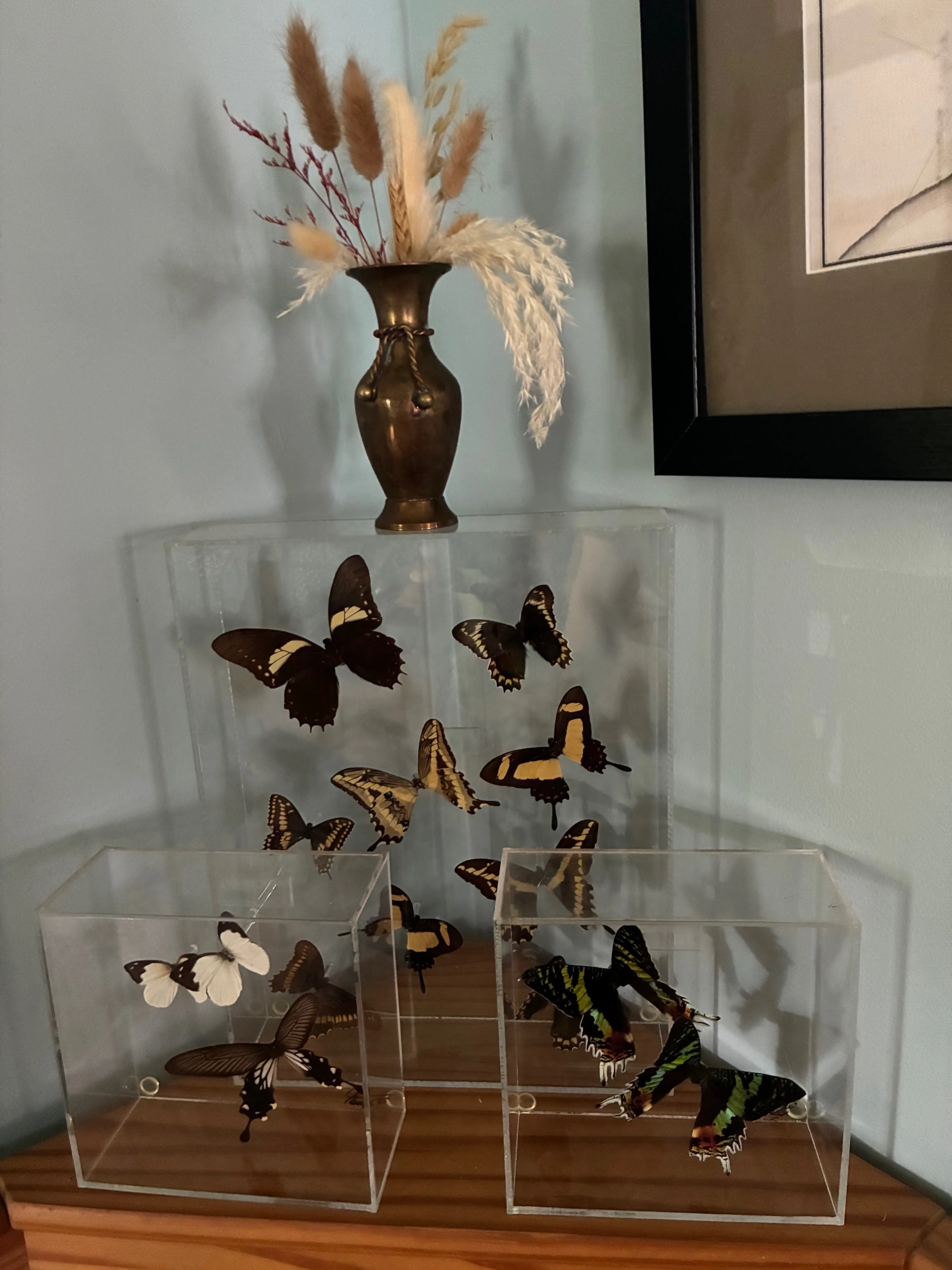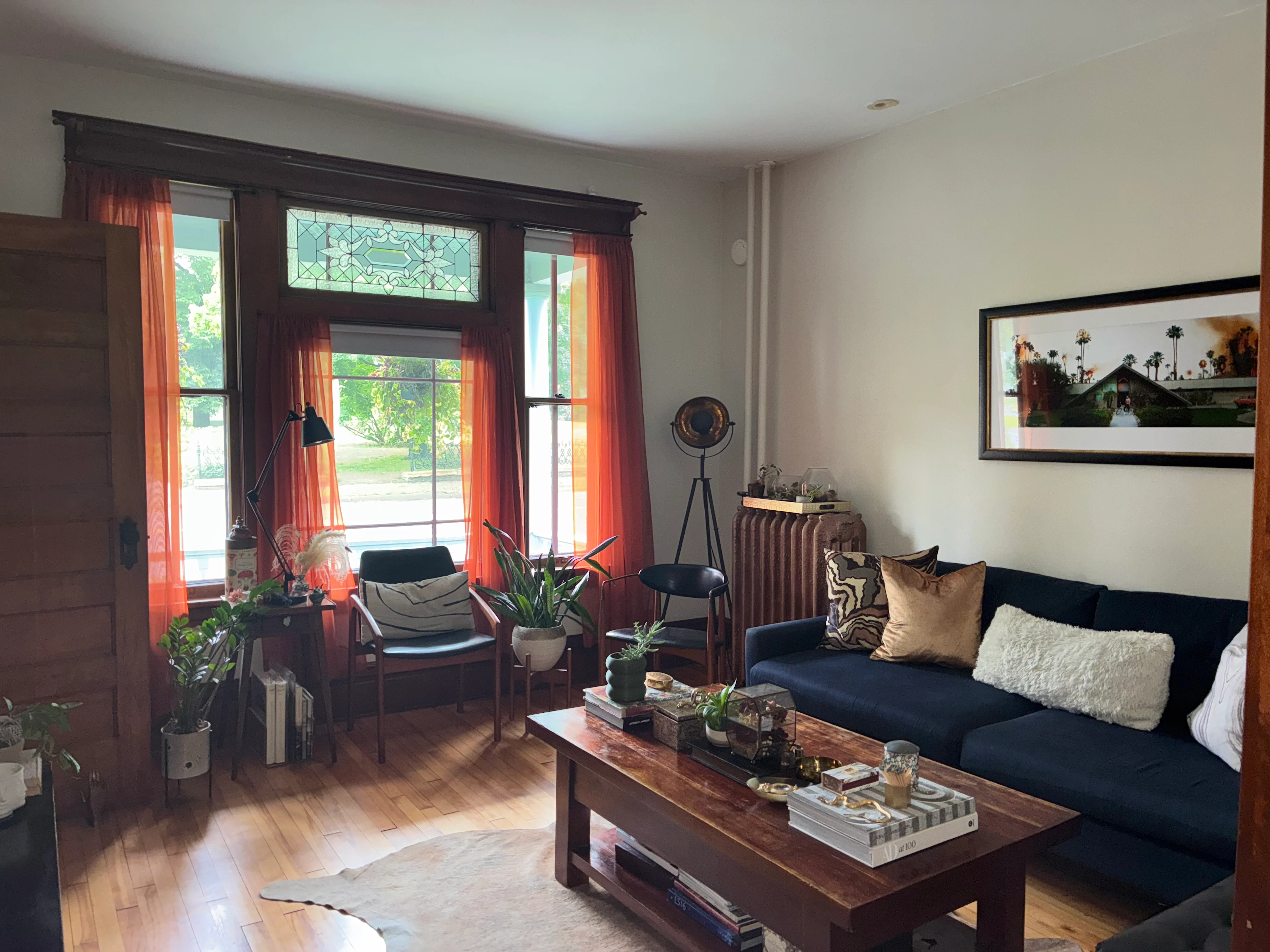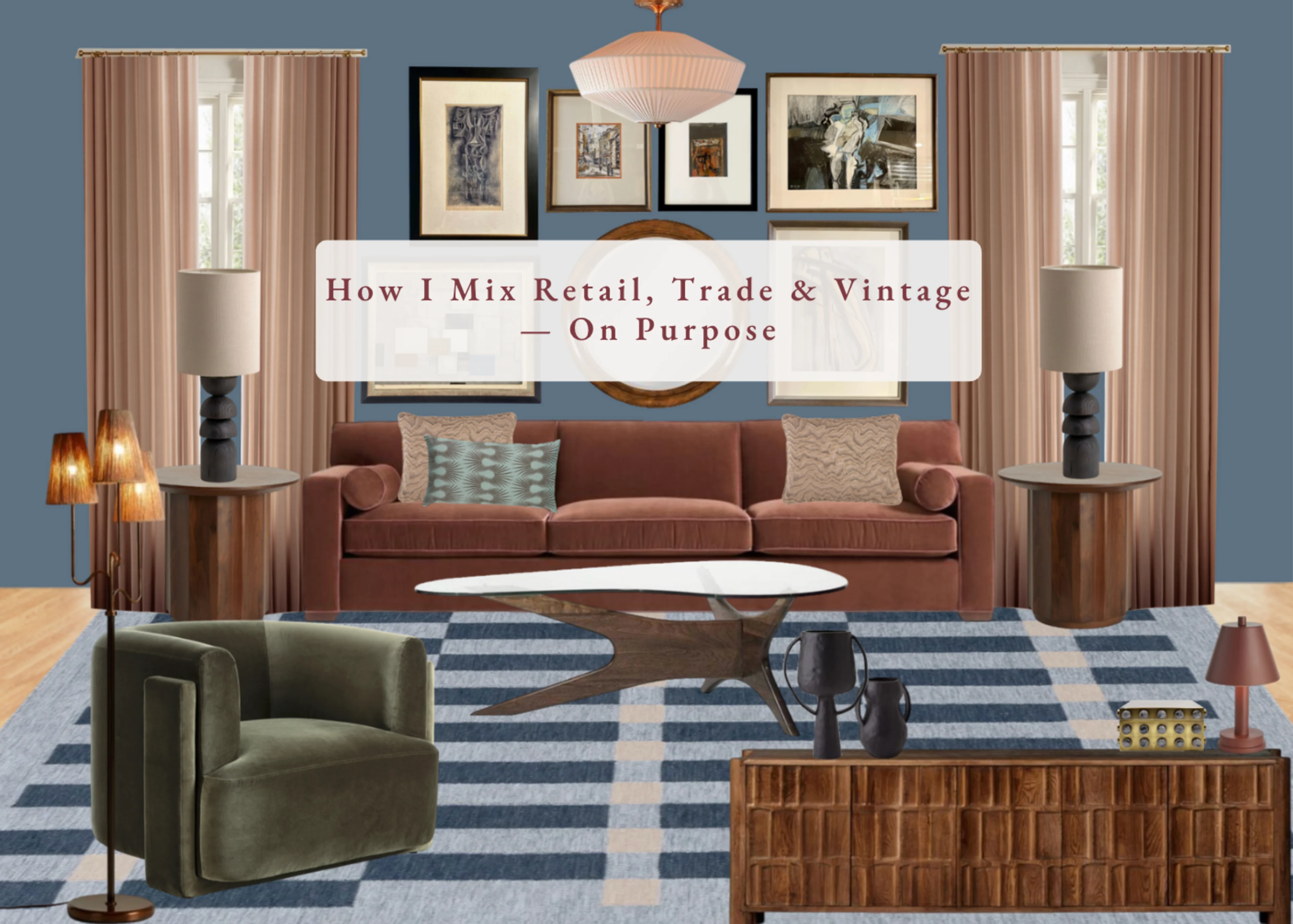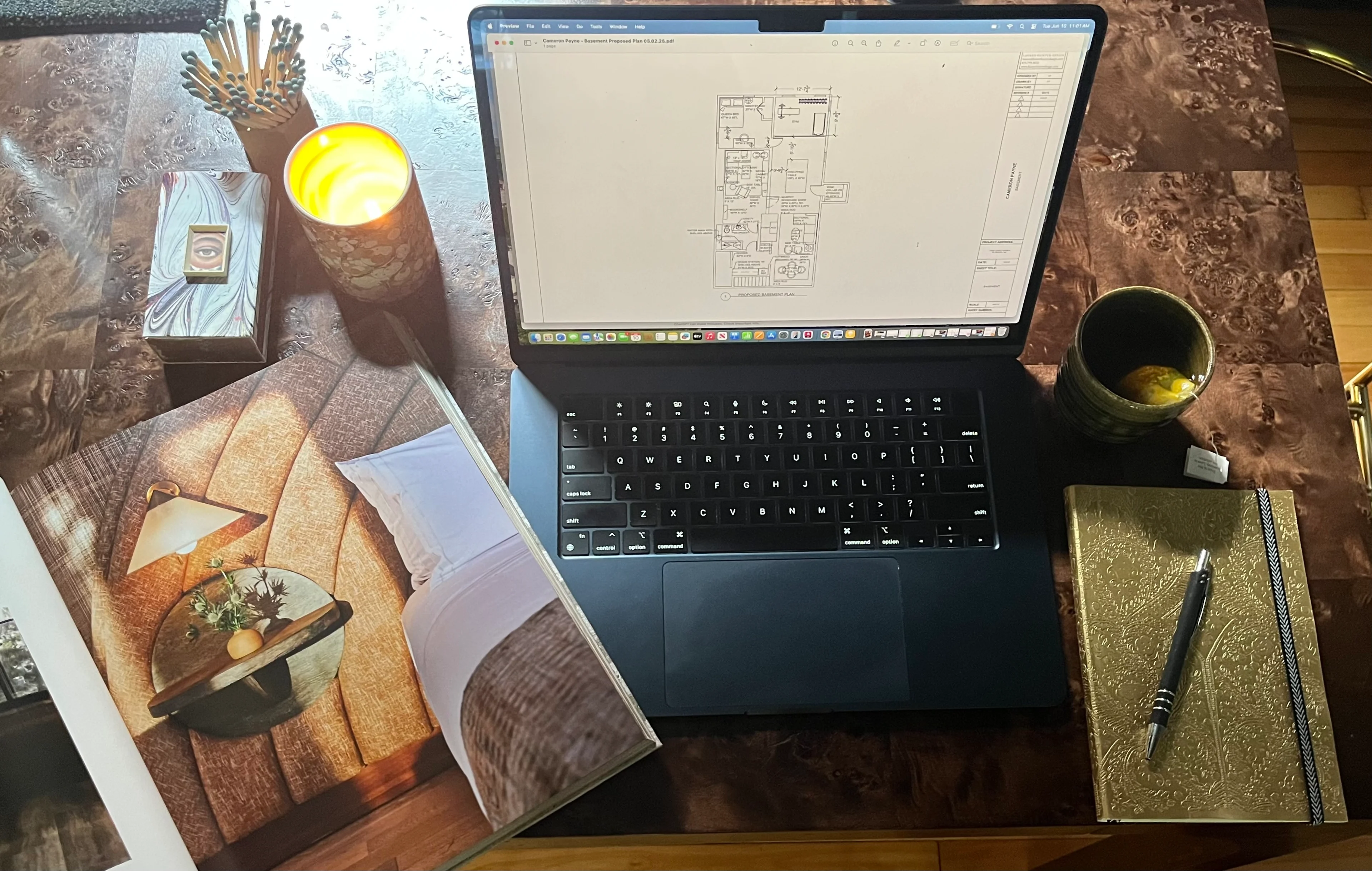There’s something magical about a well-loved collection — especially when it’s made up of vintage finds. Whether it’s butterflies, poison bottles, old books, crystals, or tiny brass animals, a curated collection adds personality, warmth, and storytelling to a space.
But styling it all without your shelves feeling like a thrift store explosion? That’s where the art comes in.
Here’s how I like to approach styling my own collections in a way that feels layered and intentional — never cluttered.
Group by Color or Material
Even if your collection includes a mix of styles, grouping like with like helps it read as a cohesive story. I often cluster together objects in the same color family (think amber glass, earthy neutrals, or brass tones) or by material — ceramics, glass, metal — to create visual calm and rhythm.
Take the styled shelf in my living room — there’s plenty of variety, but grouping brass pieces together and keeping to a tonal palette gives everything a sense of balance.
A sea of similar finishes makes even the quirkiest pieces feel elevated.
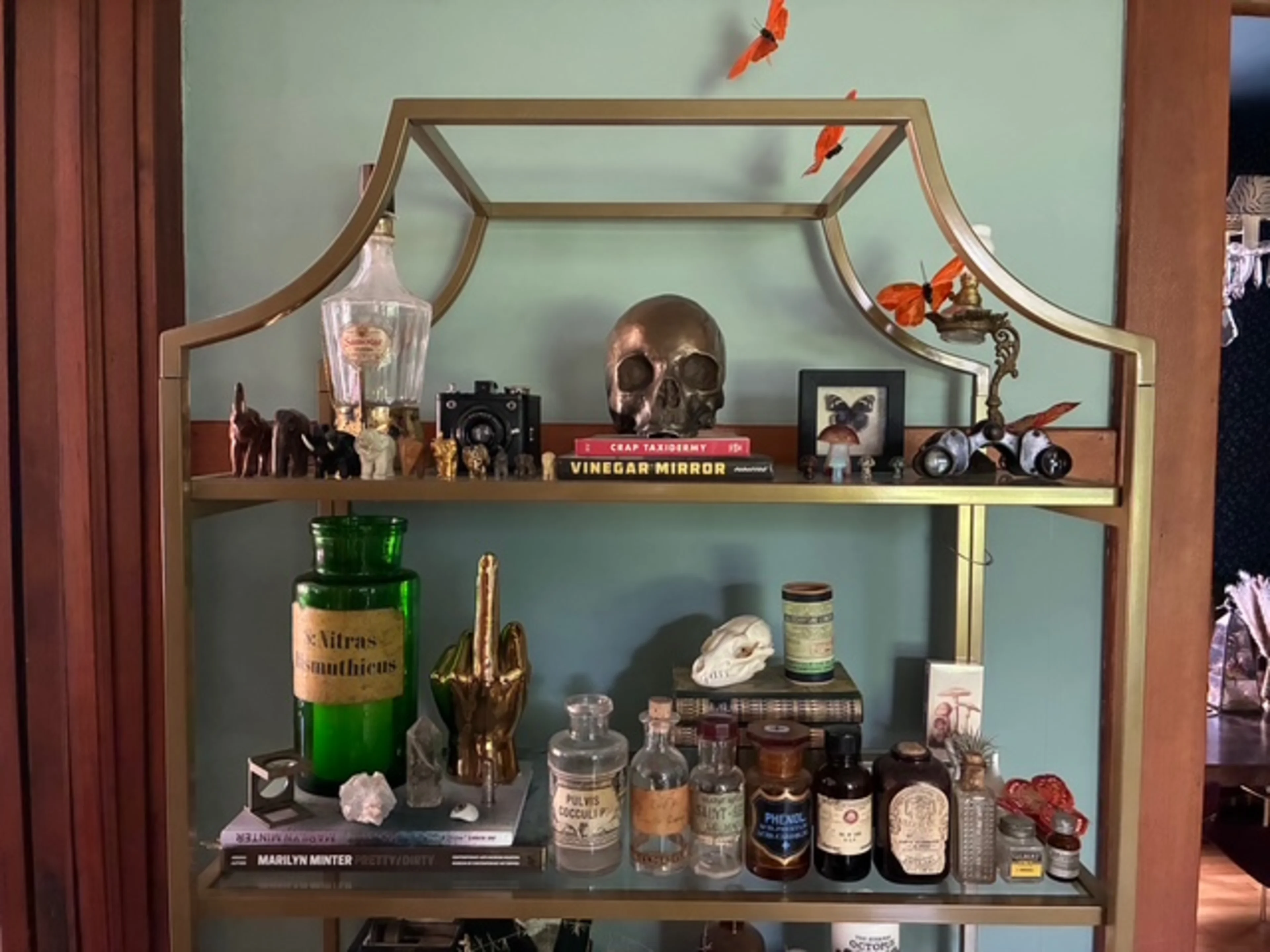
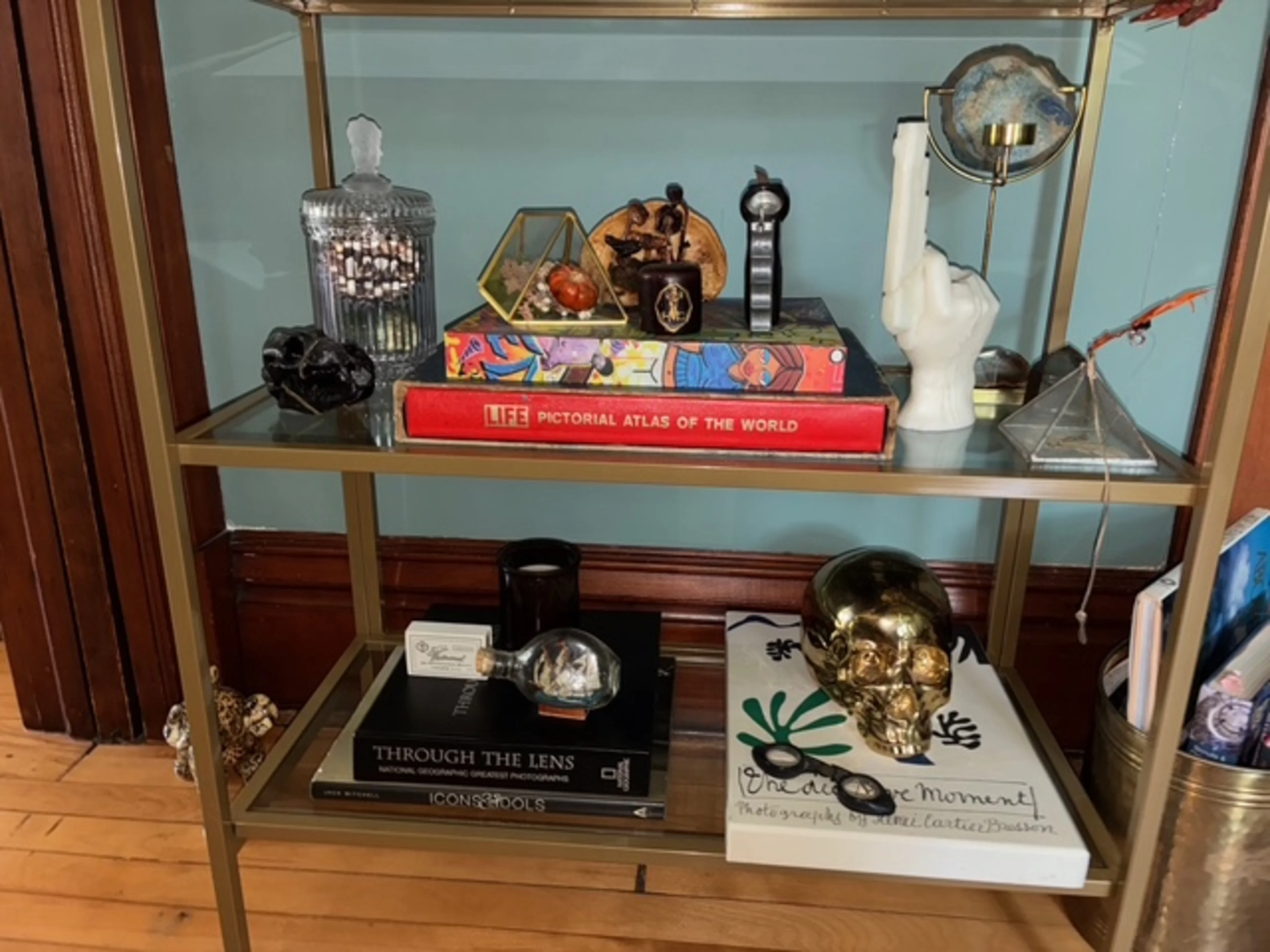
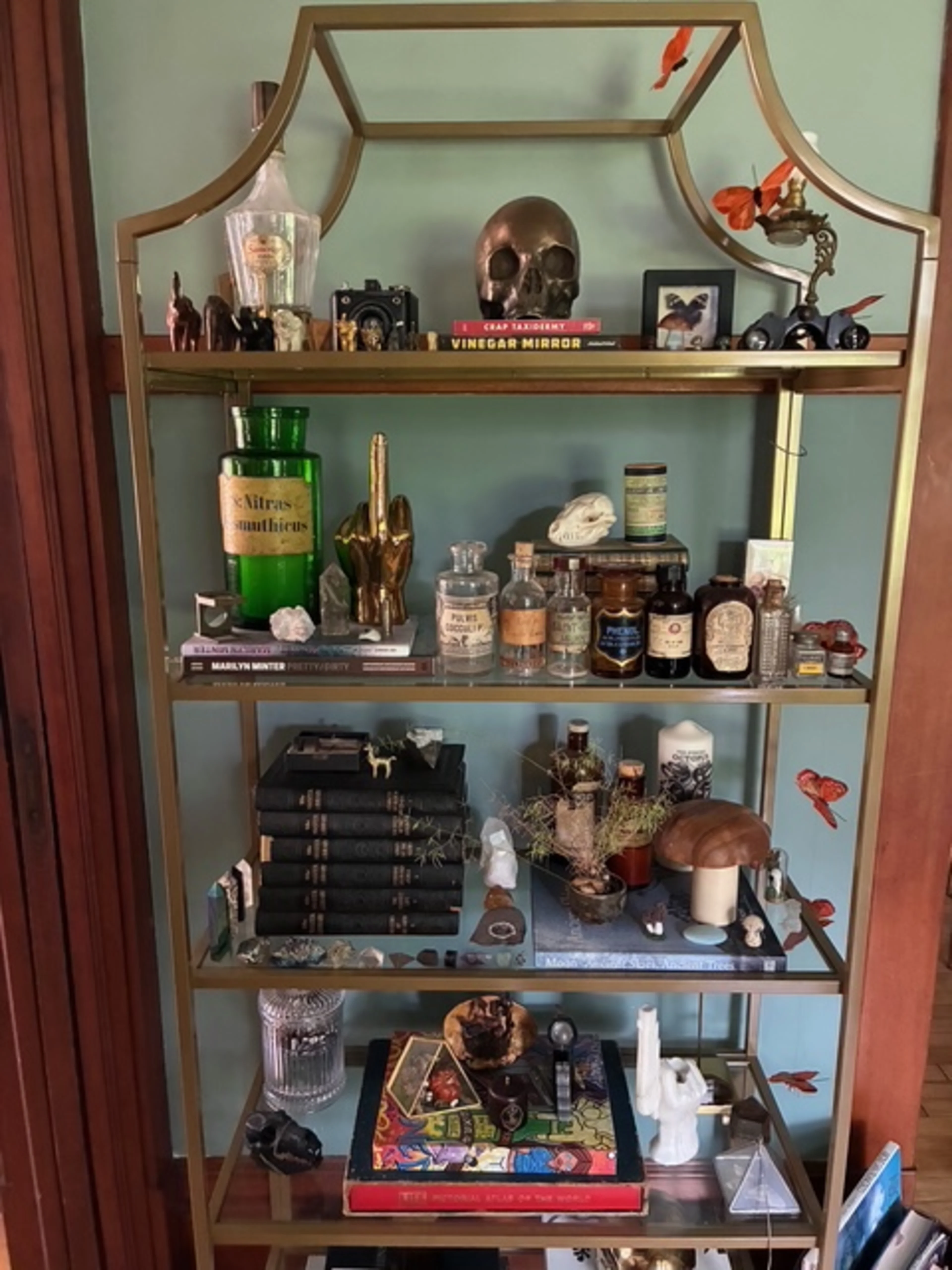
Mix Scales (Small Curios + Framed Art)
A flat shelf of all small items can start to feel busy. I love breaking that up by layering in framed art, small risers, or sculptural pieces with a bit of height.
Think: a butterfly specimen box hanging above a tall plant stand, or a stack of coasters next to a low bowl of crystals. On a coffee table or console, adding vertical elements — like a lamp or a tall terrarium — creates contrast and movement.
Mixing heights and depths keeps the eye moving and adds interest.

Give Pieces Room to Breathe
You don’t need to display everything all at once. Choose your favorites, rotate seasonally, and leave intentional white space on your shelves or surfaces.
One of my gallery walls has plenty of breathing room around each piece, and on side tables, I’m always editing — a bowl, a candle, a little airplant. That’s it.
That breathing room is what lets each item shine. A collection doesn’t have to be overwhelming to make an impact.
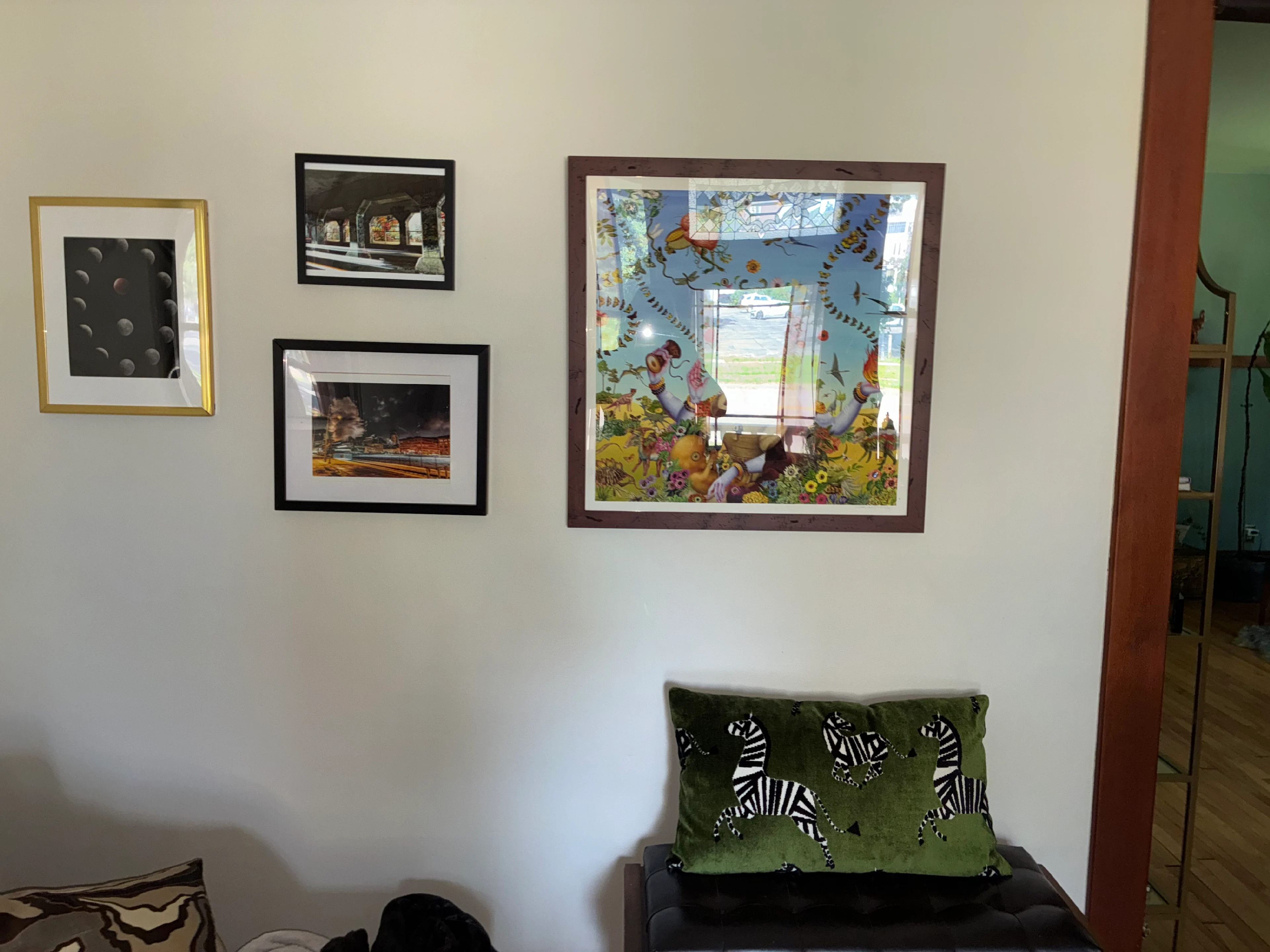
Use Trays, Bowls, or Shelves to Ground the Collection
Surface clutter turns into styled vignettes when you use a tray, bowl, or pedestal to corral your pieces. I do this all the time — on coffee tables, radiators, and entry tables. It instantly gives the display structure.
Try grouping smaller items like coasters or matchbooks in a shallow ceramic bowl, or setting terrariums on a tray to keep everything feeling grounded and intentional.
Little anchors go a long way.
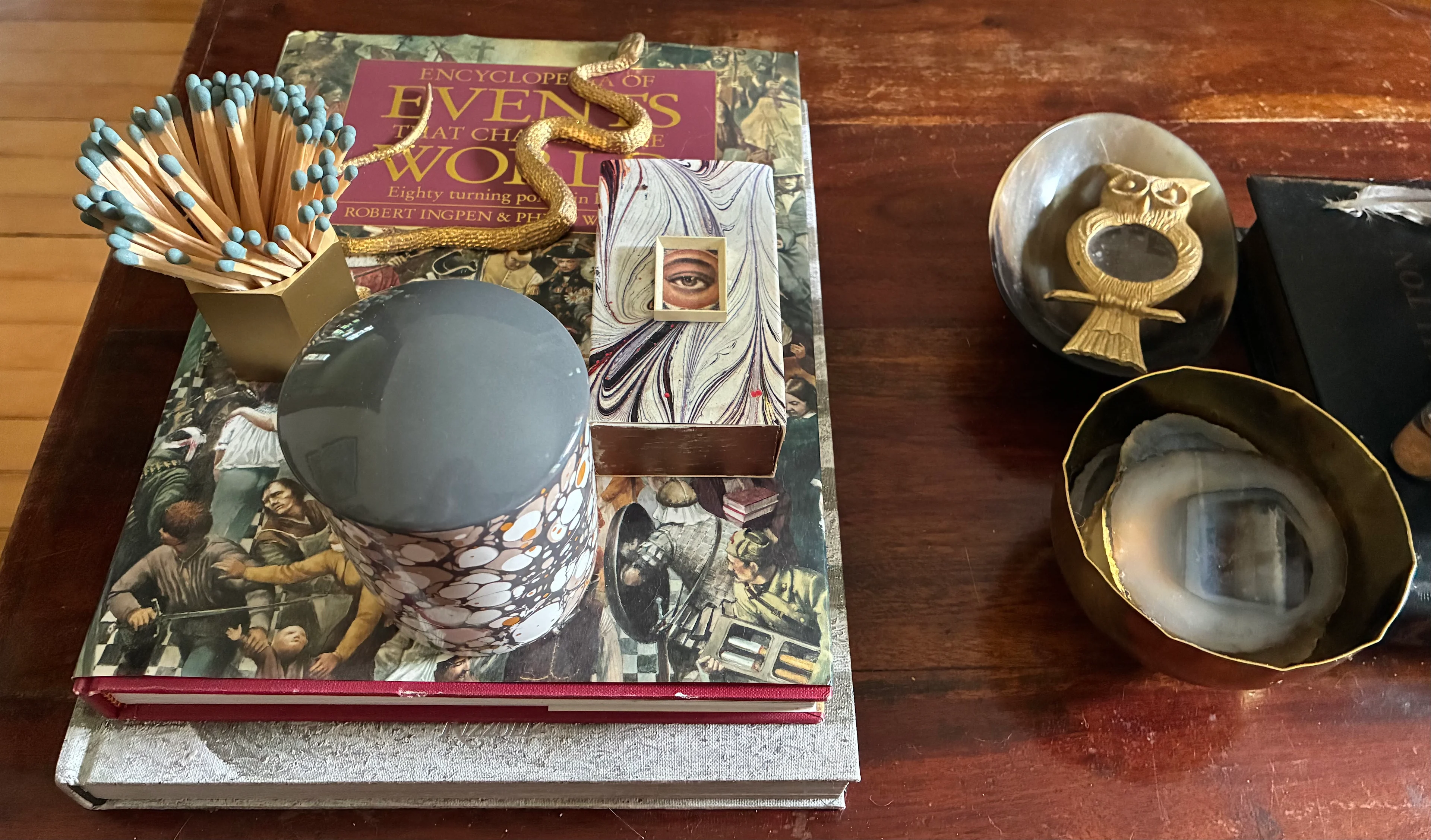
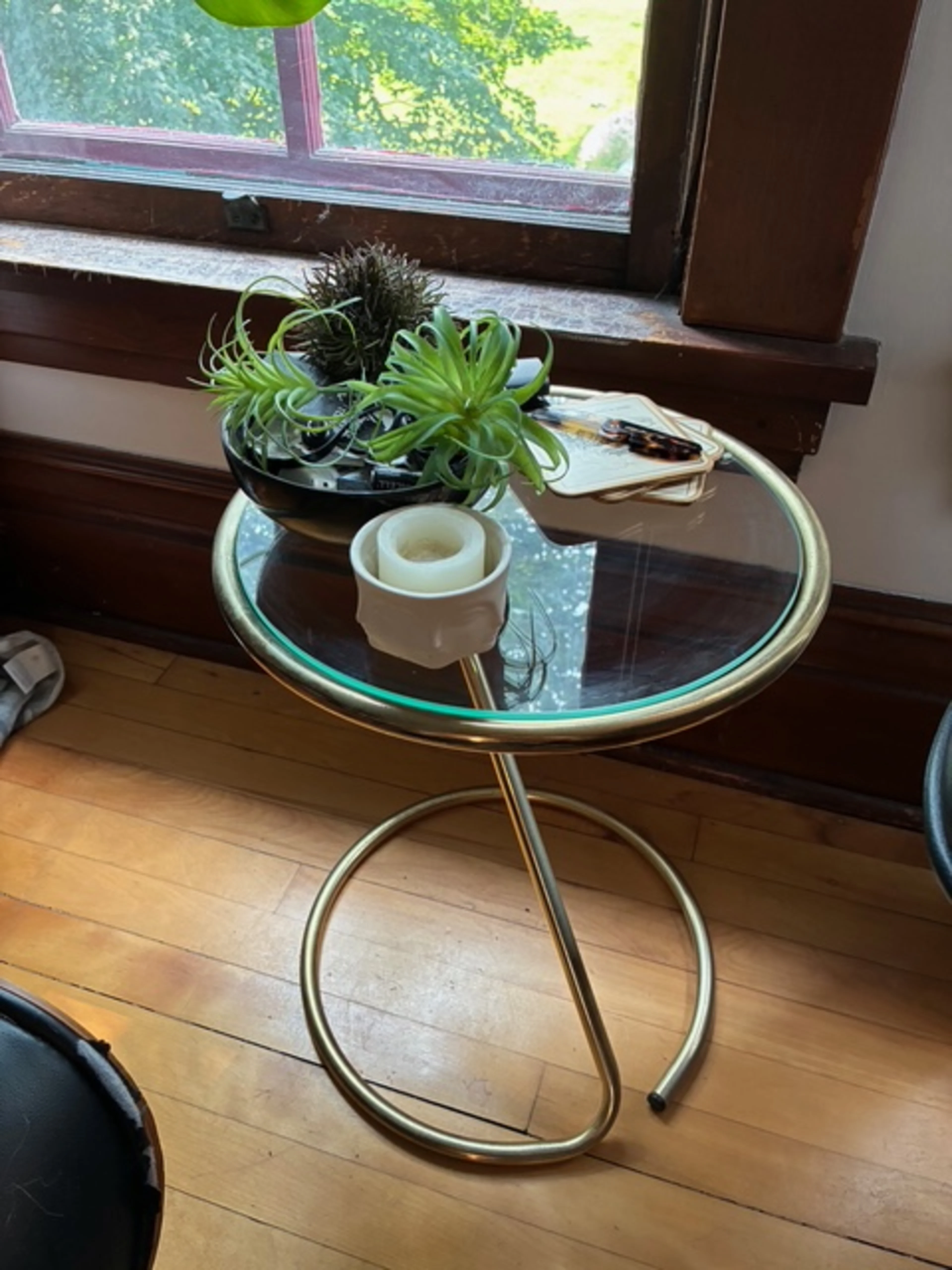
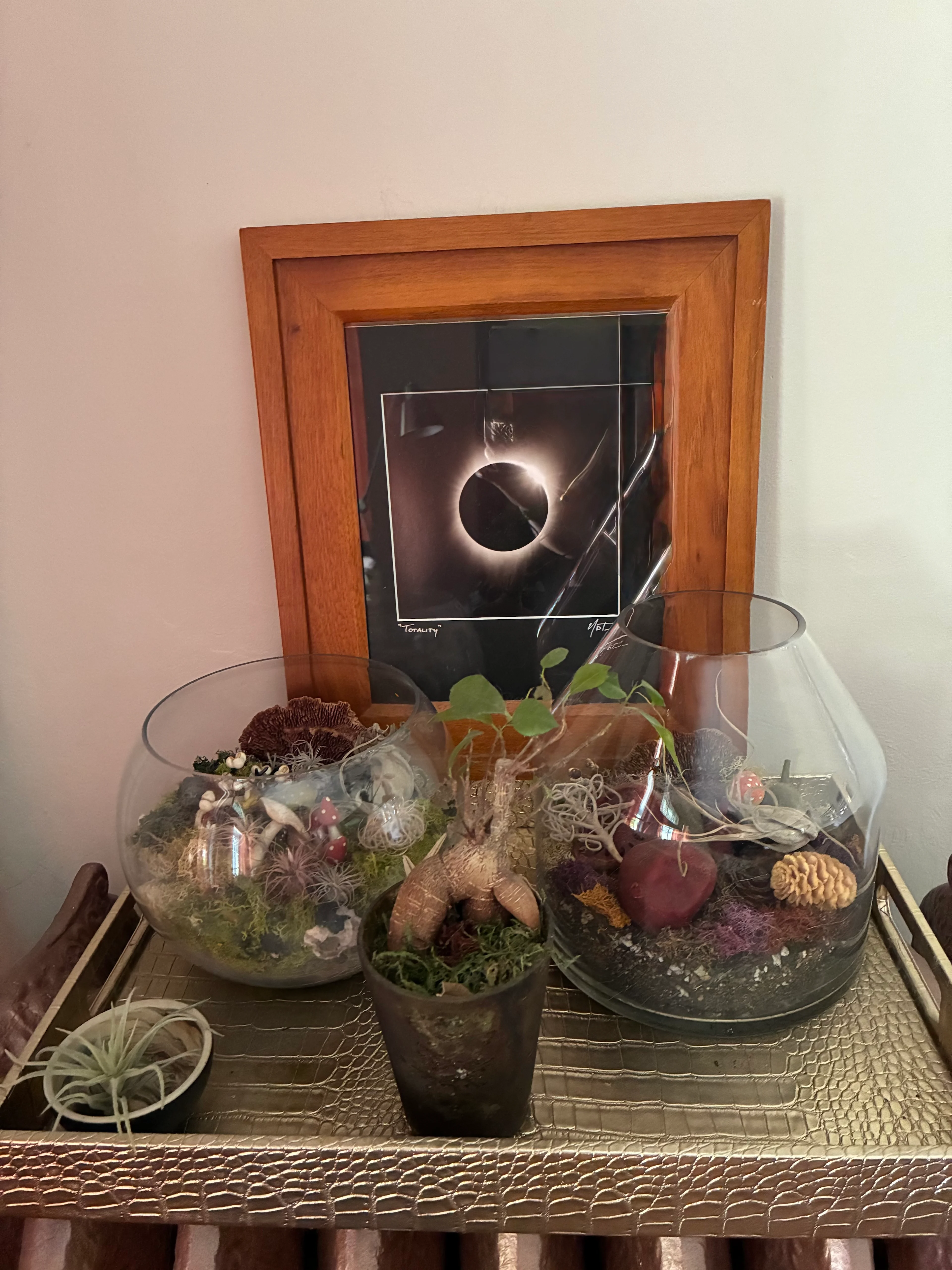
Let It Tell Your Story
The most important rule? Forget the rules. If it brings you joy, it's worth displaying.
Collections are about storytelling, nostalgia, and curiosity — and they’re most powerful when they reflect you. That’s why I keep my butterflies out, mix poison bottles with brass animals, and style crystals next to framed art.
So go ahead — display your favorite finds with pride. The right styling will make it work.
Want help styling your own collections? Reach out here — I’d love to help you create a space that reflects what you love.
